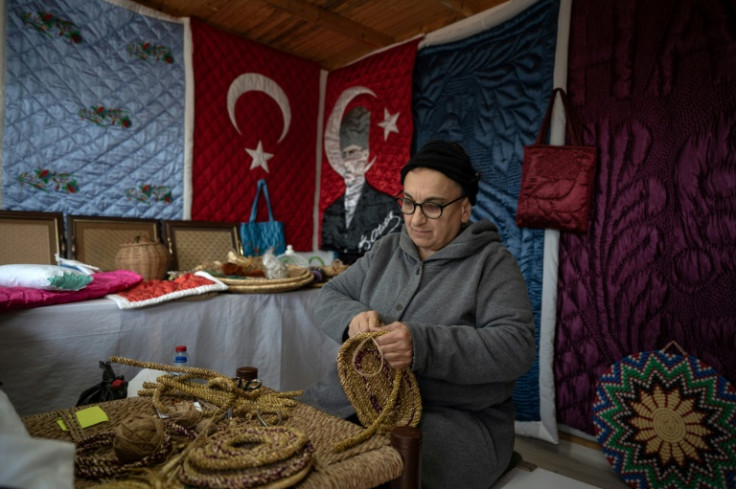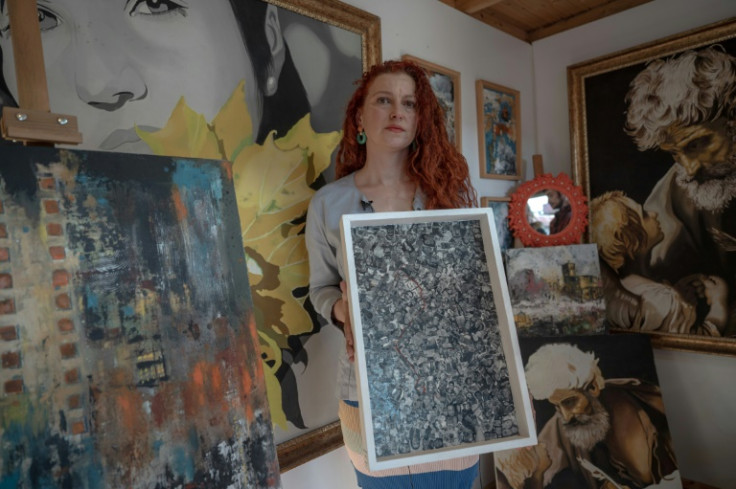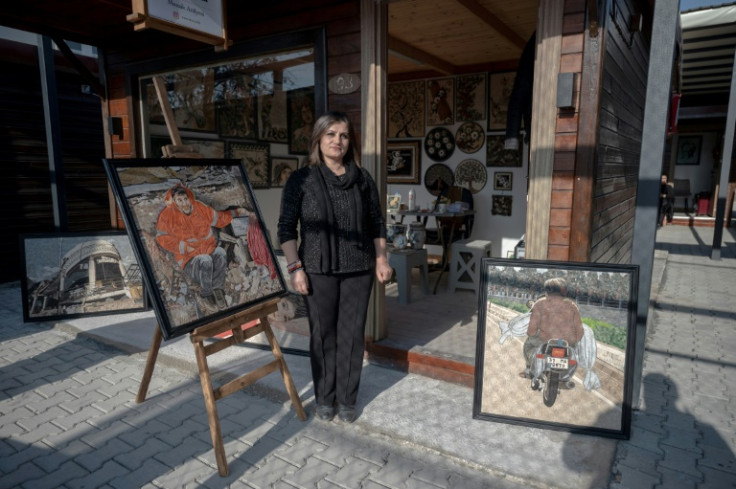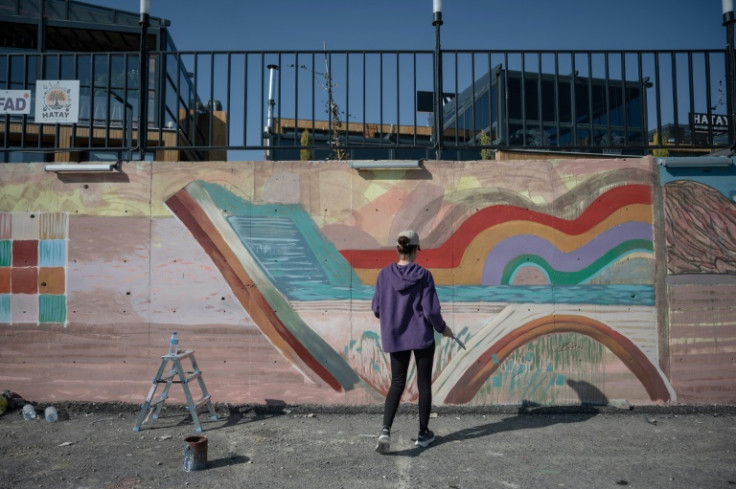For Quake Survivors, Art Brings Healing In Turkey's Antioch

At first glance, it's a happy image -- hundreds of smiling faces torn from newspapers and pasted into a frame. But these are ghosts, victims of the 2023 earthquake in Turkey that claimed more than 53,000 lives.
The montage was put together by a local artist from Antakya, whose life was among the thousands upended when the 7.8-magnitude quake devastated huge areas of southern Turkey in the early hours of February 6, 2023.
"I don't know who they are but I 'know' every single one of them," said artist Emel Genc 43, who says she wept as she added each face.
"When I put people's memories into those frames with all that emptiness and despair, they see their own lives. There is sadness but also happiness that someone is trying to keep those memories alive," she told AFP.
No place was worse hit than Antakya, the site of ancient Antioch, where 90 percent of the buildings were lost and more than 20,000 people died in the town and the surrounding Hatay province.
"We lost an entire city," said Genc, who uses objects salvaged from the ruins -- old photos, trinkets, fragments of concrete -- in her art, which expresses "the utter emptiness and despair of losing absolutely everything".
Many of Genc's works are on display at Antakya's Art and Culture Market, an open-air complex of wooden booths which opened on January 1 and showcases the work of more than 70 local artists.
"During the earthquake, many of the city's cultural and social venues were reduced to rubble," explained Hakan Boyaci, head of Hatay's cultural association.
The aim was to create a space that would bring back local artists, many of whom had left, offering them somewhere to show their work and creating a social meeting place for the community.
"The main idea was to bring back the artists, who are the memory of the city. You can rebuild homes and buildings but that alone won't put a city back on its feet," he told AFP.
On a quiet Wednesday afternoon, only a handful of visitors were there, peering into the windows and chatting with the artists, some of whom offered workshops.
Outside one, a young girl stood proudly holding up a piece of paper marbling art she'd done, her smiling family snapping photos.
"Many people are still living in container cities and they needed somewhere to go out. This place provides space for social gathering and healing through art and culture while the city gets back on its feet," Boyaci said.
Another initiative involving quake-hit restaurants opened in September.
The Antakya Gastronomy Market showcasing the city's rich culinary heritage, much of it inspired by Syria's Aleppo, just two hour's drive east.
For 10 years, 47-year-old Eser Mansuroglu had made traditionally themed mosaics of ancient historical artefacts.
But since the earthquake, she's copied images that deeply moved her.
One is of an iconic image of a man in an orange high-visibility jacket sitting by the rubble holding onto his 15-year-old daughter's hand, a photo taken by AFP photographer Adem Altan.
"He didn't let go of his daughter's hand until the morning even though she'd died. That affected me very, very deeply because I also lost my mother and brother," Mansuroglu told AFP.
She said she created the mosaics in order to process that pain.
"After so much death we were in a very, very bad place. For a while, I stopped making art but then I threw myself into it to heal.
"It felt like therapy," she said. "I healed by doing mosaics."
Funded by the governor's office and the Eastern Mediterranean Development Agency, the initiative has provided "a breath of fresh air" for both artists and residents, Boyaci said.
Outside the complex, two artists were painting bright friezes on the concrete sidings.
"Art is a way of documenting history," said Mehmet Ercin, a 27-year-old graffiti artist who iss being paid to paint scenes showing the city's rich history.
But it will omit one key event.
"We're not going to paint the earthquake because we don't want to remember it," he said, his gloved hands splattered with acrylic paint.




© Copyright AFP 2025. All rights reserved.





















